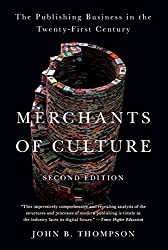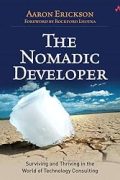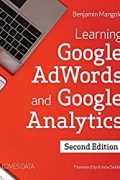
Rating: 8.1/10.
Merchants of Culture: The Publishing Business in the Twenty-First Century by John B. Thompson
Book about the book publishing industry, primarily the USA and the UK. Publishers act as middlemen: they purchase content from agents, who represent the business interests of authors; they add value to the process in several ways: by content filtering, taking financial risks, managing copywriting and proofreading, and handling sales and marketing. They possess capital in the form of human resources, finances, and reputation. Generally, the readers’ attention is the scarcest resource, whereas content creation and physical book production are relatively inexpensive.
Retail sector: this is where readers purchase books. The retail landscape has changed significantly in the 80s and 90s, due to the consolidation of bookstores into larger chains and the decline of independent bookstores, which were generally inefficiently ran businesses, so only a small number of efficiently run independent bookstores survived. Amazon emerged as a major player, dominating online sales and gaining significant bargaining power. Additionally, supermarkets began carrying a limited selection of highly popular books that sold rapidly, compensating for lower profit margins.
Agents represent the interests of authors, who are creatives but may lack knowledge or interest in the business side. Agents sell the works of these authors to publishers and negotiate the best deals. They face the challenge of sifting through many authors to find those with promise who are not already represented by another agent. Reputation plays a crucial role, so it’s discouraged to poach an author from another agent.
Publishers, especially editors, are responsible for deciding which manuscripts to acquire and turn into books, and also handle tasks such as proofreading and marketing. Editors often have significant discretion in choosing which books to acquire and at what price, as nobody knows how well a book will sell anyways. Recent decades have seen a lot of mergers in the industry, driven by the desire to benefit from economies of scale, but publishing is still challenging because it is low growth and low-margin business compared to more lucrative forms of media. Additionally, the publishing industry has experienced polarization, resulting in large or small, but few medium-sized publishers. Large publishers benefit from economies of scale, giving greater financial leverage and consolidating back-office tasks like accounting. On the other hand, small publishers benefit from the “favor economy,” where freelancers are willing to work at lower rates and the owners position themselves as having less commercial ambitions. It is difficult to be medium-sized, except for specific niches such as children’s and academic publishing.
Most of the revenue comes from a small number of bestsellers, similar to the movie or music industry. Therefore, publishers must do what they can to identify “big books.”; the difference between big books and bestsellers is that big books have potential, while bestsellers are the ones that actually sell well. However, it is difficult and subjective to identify big books, especially for new authors who don’t have any data, who are in a better position than an author with a few books that didn’t sell well. More reliable is established authors or those with a preexisting platform, but it is a strong signal to all publishers so they are more expensive to acquire their books. Additionally, publishers want to build a backlist of books, which has high profit margins but is difficult because most old books have already been acquired and building a new catalogue is time-consuming, so still most of the effort is spent on acquiring new books. Large publishers are also tied to financial cycles and need to “fill the gap”, which means meeting annual or quarterly financial or sales targets. They must quickly purchase enough big books to achieve targets by a certain deadline, but this strategy can backfire if editors become too desperate to acquire big books and make poor decisions solely to meet arbitrary goals.
Publishers face a crowded marketplace where there are lots of books competing for finite reader attention. To address this challenge, publishers often start marketing few weeks prior to the release date to generate anticipation and pre-orders, driving high sales during the first week. Publishers also pay a lot of money to retailers to place books in highly visible spots near the front of bookstores, such as display shelves, but such marketing efforts are costly and typically last for only a few weeks. Usually, most of the sales occur a few weeks after the book’s release, and this is more predictable for fiction books, but there are exceptions when books get mentioned by celebrities like Oprah, movie adaptations, or political events that make the topic more interesting. Retailers return unsold merchandise after a few weeks, resulting in heavy losses for the publishers as they must refund the retailers.
One difference between publishing in the US and the UK is that the US has laws mandating that all retailers in the same category receive the same price, while the UK has no such laws, so publishers concede significant discounts to supermarkets up to 60% to 65%, but due to the high volume generated, it remains worth it to the publishers.
The last few decades have seen a transition to digital technologies, but not as extensive as some predicted. The most obvious shift is the rise of e-books, but e-books have had only modest adoption and physical books are here to stay. E-books have been most popular in fiction but not as much in nonfiction, since there are still certain advantages that physical books have over e-books. The impact of digitalization has been more significant in the behind-the-scenes of publishing, for example, print-on-demand allows books to be printed when an order is placed instead of needing to predict demand and potentially end up with unsold inventory. Another change is publishers make sure to have digital archival copies available to ensure that books can be printed in the future or distributed in e-book format if needed.
E-books are perceived as having lower value than physical books, so customers expect lower prices, but actually the production cost of e-books isn’t that much lower because the majority of the cost is in the intellectual work of filtering and editing the content, not the printing and shipping physical copies. When Amazon started to price e-books at $9.99, this caused a major problem for the publishing industry as it devalued content in the eyes of consumers. By far the most valuable asset that publishers have is content; in the music industry, consumers came to expect to get content for free, an outcome which the publishing industry must avoid at all cost.
The last chapter is about the negative aspects of the capitalistic trends in publishing. Publishers prioritize sales figures, and this is detrimental to most except the top authors: for example, mid-tier authors who have published a few books but haven’t achieved runaway success — these authors are tied down by their historical sales data, making it unlikely for publishers to take another chance on them. The industry is shifting towards on fewer highly-selling books, a lot of this is driven by supermarkets who stocking only a few titles. Although many books on a wide range of topics are still being published every year, more and more of the revenue is going towards fewer best-selling books.




1 thought on “Merchants of Culture by John B. Thompson”